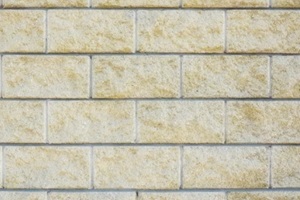 Every commercial space should be constructed with purpose in mind. From the décor to the colors and even the indoor temperature, businesses must carefully curate their properties to appeal to consumers and facilitate positive customer interaction. One source of innovation that many businesses fail to think of is custom wall coverings. Instead of paint or wallpaper, coverings offer advantages such as a high degree of customization, accessible pricing, and ease of installation.
Every commercial space should be constructed with purpose in mind. From the décor to the colors and even the indoor temperature, businesses must carefully curate their properties to appeal to consumers and facilitate positive customer interaction. One source of innovation that many businesses fail to think of is custom wall coverings. Instead of paint or wallpaper, coverings offer advantages such as a high degree of customization, accessible pricing, and ease of installation.
However, because every business is unique, the best type of wall covering for a competitor may not be what is right for you. The right covering will be made of a material that is ideal for your business’s specific use case without compromising on customer perception and impression.
Here are the main elements to consider when choosing the right custom wall covering materials for your business.
Custom Wall Covering Elements to Consider
A wall covering is a custom sheet that can be applied to a wall’s surface without making significant changes, such as redoing the wall. However, the decorative pattern on the covering is just one of many factors to decide upon before ordering.
Here are a few things to consider.
Texture
While wall coverings often come with a glossy, smooth surface, there are other options. The texture of a wall covering significantly impacts the space in which it is installed. For instance, consider how a high-gloss covering could brighten a space by reflecting light from windows, reducing energy costs due to lighting and breathing a sense of life into the room.
Alternatively, wall coverings can be made with texture, ranging from small stippling to surfaces that mimic natural materials, such as brick. Textured wall coverings are good at reducing sound because their rough surface prevents some sound waves from bouncing back into the room.
Such noise reduction can reduce employee fatigue, boost customer comfort (and therefore satisfaction), and make office conversations more productive while maintaining privacy where necessary.
Material
 The material from which a wall covering is made impacts its longevity, resistance to spills and stains, and more. Most wall coverings are made of vinyl, but some have a paper backing.
The material from which a wall covering is made impacts its longevity, resistance to spills and stains, and more. Most wall coverings are made of vinyl, but some have a paper backing.
The paper-backed coverings can be more vulnerable to mold and mildew buildup, whereas true vinyl coverings serve as good insulators and can withstand temperature changes on the backing wall.
Thickness
Wall coverings do not have a uniform thickness. From thin wall coverings that primarily address aesthetic needs to extremely thick options that stand up to intense wear, the price and durability are affected by a business’s decision on thickness.
For perspective, those utilizing wall coverings mainly as a visual change can do well with the lower-cost, thin coverings, especially if they plan to switch them out frequently.
Conversely, areas such as children’s playrooms and hospitals often use thick wall coverings because they can withstand physical damage, including children spilling juice on them, hospital equipment banging into them, and more.
Pattern and Color
Of course, most businesses are eager to focus on the visual elements of a wall covering, and there is good reason to spend a lot of time on this step. The colors, patterns, shapes, or images included on the wall covering will be the first thing that customers perceive about it, and this perception shapes how much the customer may spend, how much they trust the business, and whether they choose to return.
During this stage, be sure to remember the principles of color theory and leverage the power of color psychology. From bright reds that can instill energy (but also make people feel threatened) to cool blues that convey a sense of authority and trustworthiness (but might subdue customers’ energy levels), colors matter.
Remember that colors, gradients, and patterns can also subconsciously influence customer behavior, such as drawing their gaze to a specific part of the room.
Nearby Materials
 Wall coverings do not exist in a vacuum, and every business should consider not only the covering itself but also what is around it. For instance, a business might think that a glossy option is a great choice to brighten the office.
Wall coverings do not exist in a vacuum, and every business should consider not only the covering itself but also what is around it. For instance, a business might think that a glossy option is a great choice to brighten the office.
However, if placed directly next to a window, it could create a harsh glare that is distracting or even harmful to vision for a portion of the day. Similarly, a smooth wall covering directly across from the source of the most noise in the office is a recipe for sound amplification.
Choose the Right Custom Wall Covering Materials for Your Business
Businesses already have plenty to think about when curating their space’s visual and functional appeal. Wall coverings can simplify some of this process while providing significant customization possibilities.
Contact Tree Towns for help determining what type of wall covering is best for you and how to realize your vision without compromising your budget.
